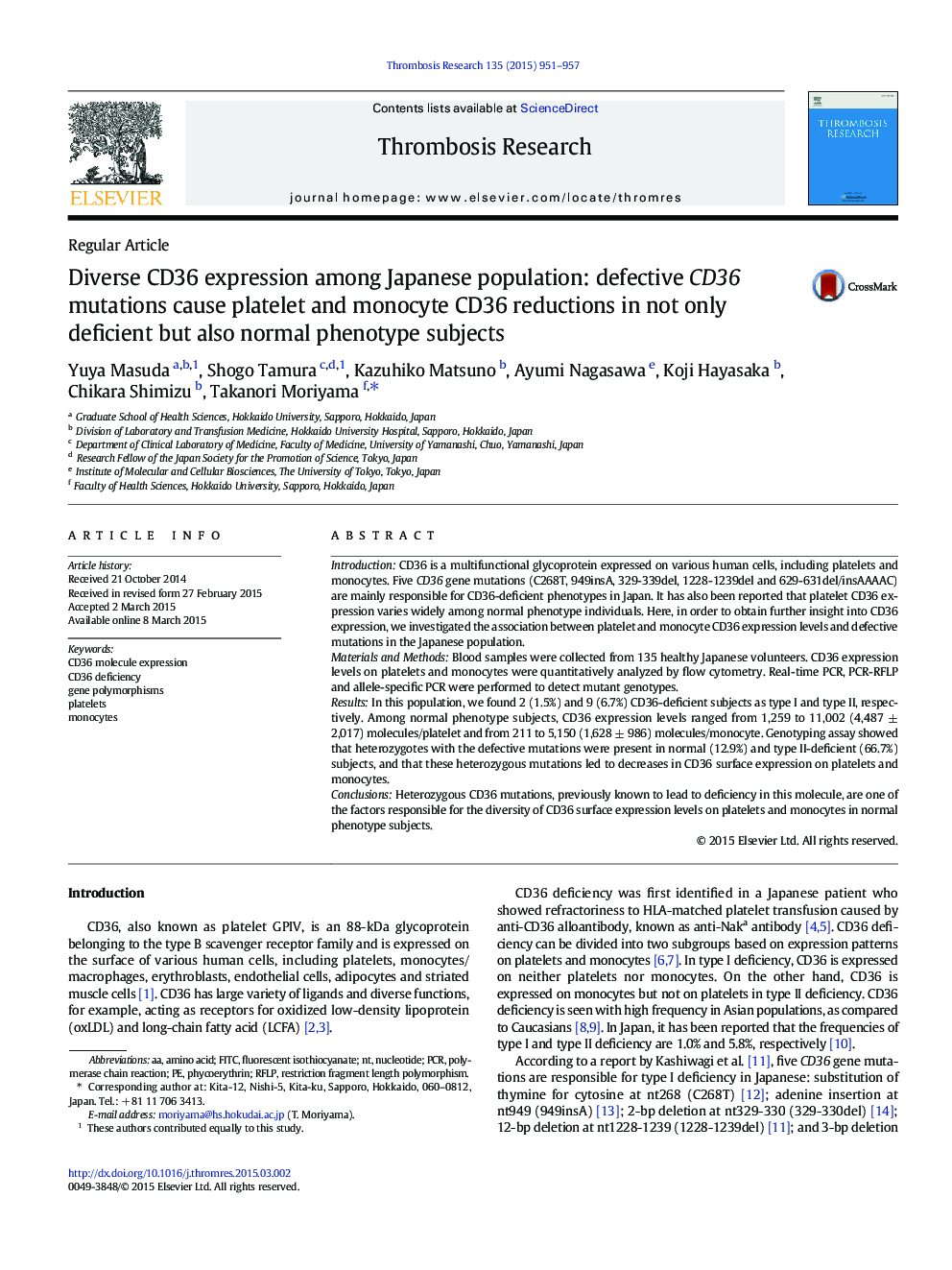| کد مقاله | کد نشریه | سال انتشار | مقاله انگلیسی | نسخه تمام متن |
|---|---|---|---|---|
| 6001601 | 1182953 | 2015 | 7 صفحه PDF | دانلود رایگان |

- CD36 expression levels on platelets and monocytes vary widely in normal subjects.
- Not only CD36-deficient but also normal subjects carry CD36-defective mutations.
- Heterozygous CD36-defective mutations result in decreased CD36 expression.
- CD36-defective mutations are factors in the diversity of CD36 expression.
IntroductionCD36 is a multifunctional glycoprotein expressed on various human cells, including platelets and monocytes. Five CD36 gene mutations (C268T, 949insA, 329-339del, 1228-1239del and 629-631del/insAAAAC) are mainly responsible for CD36-deficient phenotypes in Japan. It has also been reported that platelet CD36 expression varies widely among normal phenotype individuals. Here, in order to obtain further insight into CD36 expression, we investigated the association between platelet and monocyte CD36 expression levels and defective mutations in the Japanese population.Materials and MethodsBlood samples were collected from 135 healthy Japanese volunteers. CD36 expression levels on platelets and monocytes were quantitatively analyzed by flow cytometry. Real-time PCR, PCR-RFLP and allele-specific PCR were performed to detect mutant genotypes.ResultsIn this population, we found 2 (1.5%) and 9 (6.7%) CD36-deficient subjects as type I and type II, respectively. Among normal phenotype subjects, CD36 expression levels ranged from 1,259 to 11,002 (4,487 ± 2,017) molecules/platelet and from 211 to 5,150 (1,628 ± 986) molecules/monocyte. Genotyping assay showed that heterozygotes with the defective mutations were present in normal (12.9%) and type II-deficient (66.7%) subjects, and that these heterozygous mutations led to decreases in CD36 surface expression on platelets and monocytes.ConclusionsHeterozygous CD36 mutations, previously known to lead to deficiency in this molecule, are one of the factors responsible for the diversity of CD36 surface expression levels on platelets and monocytes in normal phenotype subjects.
Journal: Thrombosis Research - Volume 135, Issue 5, May 2015, Pages 951-957